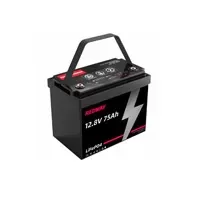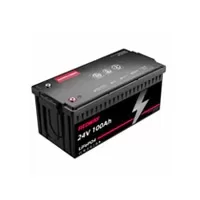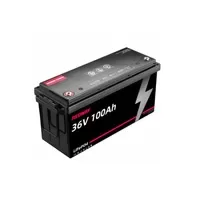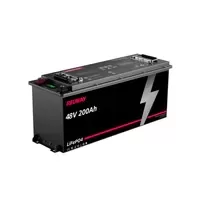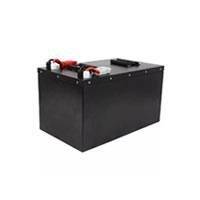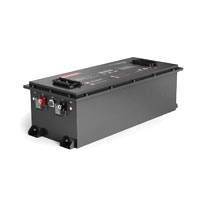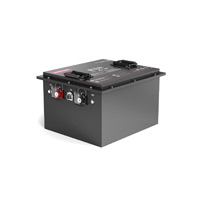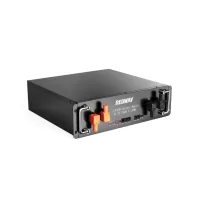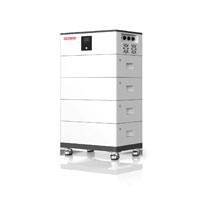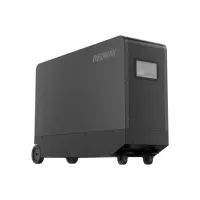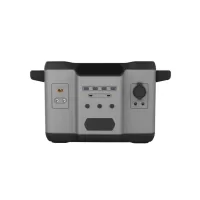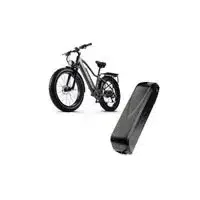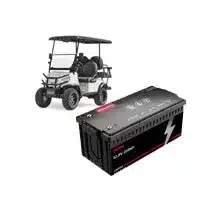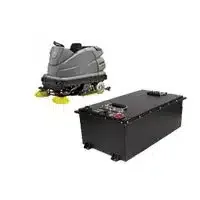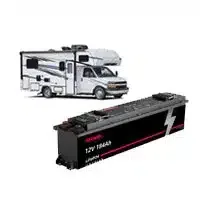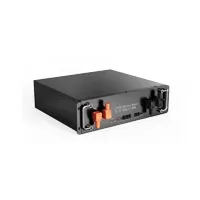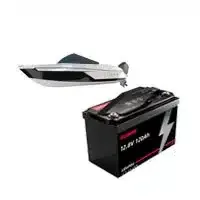Unlock the full potential of your eBike with a new battery upgrade! If you’re considering swapping out your current 48v 12Ah battery for a higher capacity option, like a 48v 20Ah, you might be wondering what exactly will happen. Will it give your eBike an extra boost or could it potentially cause irreversible damage? In this blog post, we’ll delve into the world of eBike batteries and explore whether using a higher capacity battery is a safe and beneficial choice for your beloved two-wheeled companion. So fasten your helmet and let’s dive in!
Understanding eBike Batteries
Understanding eBike Batteries
eBikes have quickly gained popularity as an eco-friendly and efficient mode of transportation. At the heart of these marvelous machines lies their battery, which powers the electric motor and enables you to effortlessly glide through city streets or conquer challenging terrains.
Unlike traditional bicycles, eBikes require a reliable power source to function. This is where the battery comes into play. The battery serves as the energy reservoir that supplies electricity to the motor, giving your ride that extra oomph when you need it most.
eBike batteries come in various shapes, sizes, and voltages. One common specification you’ll often encounter is the voltage rating expressed in volts (v). The higher the voltage, the more powerful your eBike will be.
Another important factor to consider is capacity, usually measured in Ampere-hours (Ah). Capacity determines how much energy your battery can store and deliver over time. A higher Ah rating means a longer range before needing a recharge.
It’s essential to understand that not all batteries are compatible with every eBike model. Manufacturers design their bikes with specific voltage and capacity requirements in mind for optimal performance and safety reasons.
Now that we have a basic understanding of eBike batteries let’s explore what sets apart a 48v 20Ah battery from its 48v 12Ah counterpart and whether making this switch is advisable or not for your beloved two-wheeler companion!
What is the Difference between a 48v 20Ah and a 48v 12Ah Battery?
Understanding the difference between a 48v 20Ah and a 48v 12Ah battery is crucial when it comes to choosing the right power source for your eBike. The voltage, which in this case is both 48 volts, refers to the strength of the electrical current that flows through the battery. However, what sets these two batteries apart is their capacity.
Capacity is measured in amp-hours (Ah) and determines how much energy a battery can store. A higher Ah rating means a larger capacity and therefore more stored energy. So, while both batteries have the same voltage, the 48v 20Ah has a greater storage capacity than the 48v 12Ah.
The main advantage of using a higher capacity battery like the 48v 20Ah on your eBike is an increased range or distance you can travel on a single charge. With more stored energy available, you’ll be able to ride longer before needing to recharge.
However, it’s important to note that upgrading to a higher capacity battery may not always be beneficial for every eBike. There are several factors you need to consider before making this switch.
One factor is compatibility with your eBike’s motor system. Some motors may not be optimized for use with higher capacity batteries and could potentially overheat or malfunction if used improperly.
Another consideration is weight and size. Higher capacity batteries tend to be larger and heavier than their lower-capacity counterparts. This added weight can affect the balance and handling of your eBike, especially if it wasn’t designed to accommodate such dimensions.
Additionally, using a higher capacity battery may put extra strain on other components of your eBike such as wiring or connectors if they’re not built to handle increased power demands.
In conclusion,
While upgrading from a 48v-12ah original battery to a bigger one like the
– “the – “the
48v-20ah battery can offer advantages like increased range, it’s
The Effects of Using a Higher Capacity Battery on an eBike
Using a higher capacity battery on an eBike can have several effects, both positive and negative. One of the main benefits is that it increases the range of your eBike, allowing you to travel for longer distances without recharging. This is especially useful if you often use your eBike for long commutes or extended rides.
Additionally, a higher capacity battery can provide more power to the motor, resulting in increased acceleration and top speed. This can be particularly advantageous if you enjoy riding at high speeds or need extra power when climbing hills.
However, there are also potential drawbacks to using a higher capacity battery. The first thing to consider is the weight of the battery itself. A larger capacity battery will generally be heavier than a smaller one, which may affect the handling and maneuverability of your eBike.
Another factor to keep in mind is compatibility with your eBike’s electrical system. While most eBikes are designed to handle different capacities of batteries within their voltage range (such as 48v), it’s important to ensure that your bike’s controller and other components can handle the increased power output from a higher capacity battery.
Using a higher capacity battery may void any warranties or guarantees that came with your original eBike purchase. It’s essential to check with the manufacturer or consult an expert before making any modifications that could potentially invalidate these agreements.
While upgrading to a higher capacity battery can enhance certain aspects of your eBike experience, it’s crucial to carefully consider all factors involved before making such a change.
Potential Risks and Damage to the eBike
Potential Risks and Damage to the eBike:
Using a higher capacity battery on your eBike may seem like a tempting idea, but it’s important to consider the potential risks and damage that could occur. One of the main concerns is that the higher voltage and current output of a 48v 20Ah battery compared to a 48v 12Ah battery can put additional strain on the electrical components of your eBike.
The increased power can cause excessive heat buildup, which may lead to overheating or even melting of wires and connectors. This can result in short circuits or electrical fires, posing serious safety hazards. Additionally, using an incompatible battery with higher energy density could overwork the motor controller, causing it to fail prematurely.
Another issue is that using a larger capacity battery than what was originally intended for your eBike may void any warranties you have. Manufacturers design their bikes with specific batteries in mind, taking into account factors such as weight distribution and performance capabilities.
Using an oversized battery might also affect the overall balance and handling of your eBike. The added weight could make it more difficult to maneuver or impact its stability while riding.
Before making any upgrades or modifications to your eBike’s battery system, it’s crucial to consult with professionals who are knowledgeable about compatibility issues and safety considerations. They will be able to guide you through selecting an appropriate replacement if necessary while minimizing any potential risks or damage.
How to Safely Upgrade Your eBike Battery
When it comes to upgrading your eBike battery, safety should always be a top priority. Here are some important steps you can take to ensure a safe and successful upgrade.
Make sure you choose a battery that is compatible with your eBike’s voltage requirements. In this case, since the original battery is 48v, you would need to select a 48v battery for the upgrade.
Next, consider the capacity of the new battery. While using a higher capacity battery may provide longer range and more power, it’s essential to check if your eBike’s motor controller can handle the increased current draw. Consult with an expert or refer to your eBike manufacturer’s specifications for guidance.
Before installing the new battery, carefully read and follow all instructions provided by the manufacturer. This will help ensure proper installation and prevent any potential damage or risks.
Additionally, don’t forget about proper maintenance of your upgraded battery. Regularly inspecting and cleaning terminals, as well as following charging guidelines will contribute to its longevity and optimal performance.
It’s always wise to consult with an experienced technician or seek professional assistance when making any modifications or upgrades to your eBike system. Their expertise can help avoid any unforeseen issues that may arise during the process.
Remember: Safety first! Taking these precautions will not only protect yourself but also safeguard your investment in upgrading your eBike battery for enhanced performance on every ride!
Factors to Consider Before Switching to a Higher Capacity Battery
Factors to Consider Before Switching to a Higher Capacity Battery
1. Compatibility: One of the most important factors to consider before switching to a higher capacity battery is compatibility. Make sure that the 48v 20Ah battery is compatible with your eBike model. Check the voltage and connector type to ensure a proper fit.
2. Weight and Size: Keep in mind that a higher capacity battery may be larger and heavier than your original 48v 12Ah battery. Consider whether your eBike can accommodate the increased weight and size without compromising its performance or balance.
3. Range Requirements: Assess your specific needs for range before making the switch. A larger capacity battery will typically provide greater distance coverage, but it’s essential to determine if you actually require this extended range or if your original battery meets your needs adequately.
4. Charging Time: Higher capacity batteries often take longer to charge fully compared to lower capacity ones. Consider how this may impact your charging routine and schedule, especially if you rely on quick recharges during daily use or have limited access to charging outlets.
5.
Discharge Rate: Additionally, it’s crucial to understand the discharge rate of a higher capacity battery as it can affect overall performance. Ensure that the new battery discharges at an appropriate rate for optimal power output during rides.
6.
Warranty Coverage: Check if upgrading your eBike’s battery will void any warranties provided by the manufacturer or retailer. Some manufacturers have specific guidelines regarding using third-party batteries, so do thorough research beforehand.
In conclusion (no concluding sentence needed), switching from a 48v 12Ah original eBike battery to a higher capacity option like a 48v 20Ah entails careful consideration of compatibility, weight and size impact, range requirements, charging time implications, discharge rates,and warranty coverage restrictions
Conclusion
Conclusion
Using a 48v 20Ah battery instead of the original 48v 12Ah battery on your eBike can have both positive and negative effects. On the positive side, it will provide you with a higher capacity and longer range, allowing you to ride for extended periods without worrying about running out of power. This can be especially beneficial if you frequently commute long distances or enjoy going on lengthy rides.
However, there are also potential risks and damage that may occur when upgrading to a higher capacity battery. The most notable risk is overloading the electrical system of your eBike, which could lead to overheating or even permanent damage to components such as the controller or motor. Additionally, using an incompatible or lower quality battery could result in reduced performance and overall lifespan of your eBike.
Before making the decision to switch to a higher capacity battery, it is important to consider various factors such as compatibility with your specific eBike model, the reputation and reliability of the manufacturer, warranty coverage, cost-benefit analysis in terms of improved performance versus potential risks, and whether any modifications or adjustments need to be made for proper installation.
It is strongly recommended that you consult with an expert in eBikes or contact your manufacturer directly for guidance on safely upgrading your eBike’s battery. They will be able to provide valuable insight into which batteries are compatible with your specific model and offer advice on ensuring optimal performance while minimizing potential risks.
Remember that safety should always be a top priority when modifying any aspect of your eBike. By taking proper precautions and doing thorough research before making any changes, you can enjoy the benefits of increased range and performance without compromising the integrity or functionality of your beloved electric bike.
So take some time to evaluate all aspects involved in switching batteries before making a decision – after all; it’s better to be safe than sorry! Happy riding!


